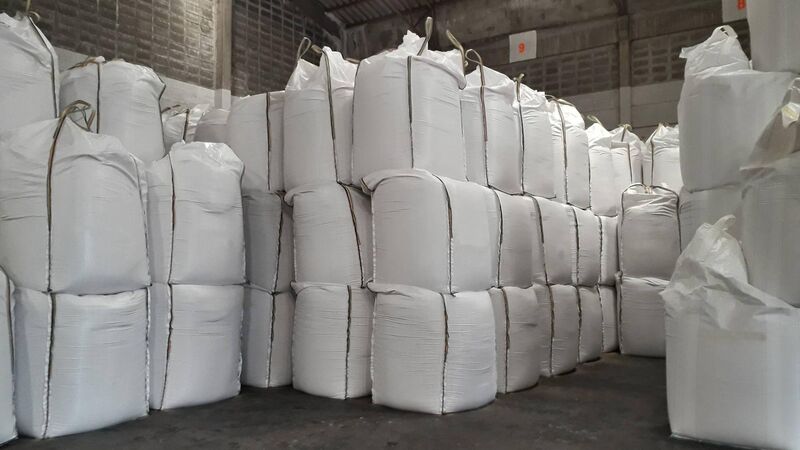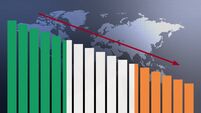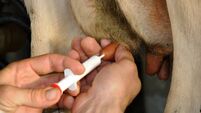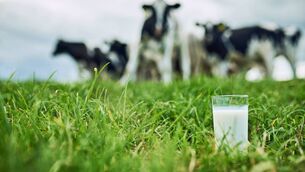Kieran Coughlan: After a year of soaring costs where next for fertiliser prices?

Whilst it is a bitter pill to swallow, any curb in farm production as a result of high fertiliser prices is likely to assist at the other end where farm gate prices for beef, dairy, and grains will hold up better when production is subdued.
Farmers are set to spend over €1bn on fertiliser this year. Irish farmers use about 1.6m tons of imported fertiliser annually. At an average price north of €800/ton currently, the total cost of imported fertiliser is likely to repeat the records of 2022.
Whilst figures for 2022 are not year available, the expectation is that there was some tail-off in demand in 2022 due to the significant spike in retail prices, albeit there was a flurry of activity at the end of the year when concerns about availability for 2023 emerged.
The input price index for fertiliser is up by 133.8%, according to CSO figures. This is borne out on the ground with Urea prices close to €1,000 per ton, where the ‘normal’ price would have been in the range of €375-€450 per ton over the past decade. Some farmers bought early at the back end of last year and may feel disgruntled that they are caught on the wrong side of the price swing but in reality prices at merchant and wholesale level have yet to experience any meaningful drops.
The reality is that fertiliser manufacturers are likely to want to recover the costs of stock produced at higher prices in 2022 before reflecting the significant price drop in gas through new production sales.
Despite the fact that the fertiliser industry made record profits last year, even after accounting for a drop in demand, the sword doesn’t cut both ways when it comes to falling input prices used in the manufacturing process being passed on anytime soon to end users. Gas prices being one of the main inputs in fertiliser production are back to about €57 euro per therm, compared to dizzyingly high prices of over €340 per therm at the end of August 22.
The four-year prices in the run-up to March 2021 were in the range of about €20 per therm, so as such the current prices are still well ahead of the long-term average. As such the expectation for fertiliser prices to return to pre-Covid/pre-Ukraine invasion levels is still some way off. On the ground, there would have been some sympathy for European fertiliser manufacturers over recent years, but the antics of the past year vis-a-vis extracting extraordinary profits at a time of crisis will do nothing to aid their cause.
Whilst it is a bitter pill to swallow, any curb in farm production as a result of high fertiliser prices is likely to assist at the other end where farm gate prices for beef, dairy, and grains will hold up better when production is subdued.
This will only translate into reality where production is also subdued in other major exporting markets. For the moment it looks like there will be no normalisation of the European fertiliser market for the first half of 2023, a time of year when the vast majority of fertiliser is applied to within the growing season, and the advice is, therefore, to buy only what you need in the short term in the expectation that fertiliser prices may drop towards the latter half of the year. As fertiliser prices do trackback, expect an increase in production which can cause a quick turnaround in farm gate prices to more normal levels.
Already French milling wheat prices have dropped from over €430 per ton in May ’22 to current prices of about €285 per ton, with the long-term prices over the previous decade closer to €285 per ton. Increased production as a result of reduced fertiliser prices will likely cause a drop in market price unless some other production-inhibiting event such as adverse weather or an uptick in conflict transpires. For those that did buy at the back end of 2022 stock relief for tax purposes may be available depending on the individual farmers' circumstances.
The tax relief mathematically translates into a tax saving worth about 12% of the full cost of the fertiliser for a higher-rate taxpayer. Having the tax deduction will take the edge off the feelings of disgruntlement meaning that prices will need to fall by at least that much before the farmer suffers a financial loss after accounting for the tax benefits. One maxim that farmers can adopt is that all decisions made are based on the information available at the time and harbouring regrets doesn’t serve much purpose.
Given that fertiliser prices are still at record prices focusing on making full use of it when growing conditions present themselves is surely the best advice, and this early dry spell is allowing for the timely application of slurry to kick off the growing season. If soil samples are needed this year, then consider taking these now where the background P and K levels are not skewed as a result of chemical fertiliser or slurry application.













